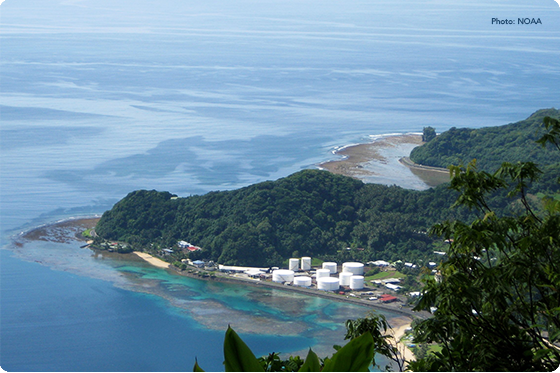
The Ninth Circuit Court of Appeals ruled against American Samoa in a recent ruling, reversing a lower court’s decision that would have blocked large fishing vessels from fishing in a zone around the islands of American Samoa. As an unorganized sovereign territory, American Samoa is allowed a special right to maintain its traditions, culture and control of its lands and waters under a treaty signed in 1900 between several island chiefs and the U.S. government. In 2016, the government of American Samoa filed a lawsuit that claimed a National Marine Fishing Service (NMFS) rule illegally shrank a fishing zone surrounding this U.S. territory in the South Pacific that was meant specifically for local fishers. The zone was reduced from 50 nautical miles (nm) to 12 nm, and boats larger than 50 feet were prohibited from fishing in the zone in order to avoid gear conflicts and competition between large fishing operations and local vessels.
At the time, the U.S. government claimed there was only one small vessel fishing in the special zone. However, the government of American Samoa denied this in its complaint, which was filed in the District of Hawaii. American Samoa claimed the NFMS rule change ignored the relevance of the local fishery to Samoan culture and the 1900 treaty by which American Samoa became a U.S. territory, which is known as the Deed of Cession of Tutuila. Additionally, American Samoa argued the 2016 rule violated the Magnuson-Stevens Fishery Conservation and Management Act (MSA), which provides a federal framework for regulating regional stocks and catch limits, as the statute requires consideration of the social and economic needs of states.
In March 2017, a federal judge declared the government’s final rule was invalid for two reasons. First, the court found that NMFS did not take into consideration whether the rule change was consistent with the Deed of Cession of Tutuila. Second, the trial court reached its decision on the basis that the U.S. government acted arbitrarily and capriciously, specifically because the court found NMFS’s rationale to be contrary to the evidence before it. NMFS appealed the judgment.
In its decision of September 25, 2020, the Ninth Circuit Court of Appeals reversed the lower court’s judgment. The Ninth Circuit determined that NMFS had not acted arbitrarily or capriciously in issuing the contested rule because the agency satisfied its statutory obligations by considering input from the American Samoa government and the new rule’s impact on American Samoa’s small alia fishing boats, sometimes called catamarans. The Ninth Circuit found sufficient evidence in the record that NMFS could justify the new rule despite input offered by American Samoa regarding the rule's impact on fishing communities, the probable effects of increased large vessel longline fishing, and the availability of fish. Observing that fewer than three alia vessels operated on a regular basis since 2006, and that only one was active in 2013 and 2014, the court concluded, “It is of little import that NMFS did not specifically cite the cessions when detailing the ‘other applicable laws’ it consulted, as NMFS considered the consequences of the rule on alia fishing boats, and rationally determined the effects were not significant.” Territory of Am. Samoa v. Nat'l Marine Fisheries Serv., 822 F. App'x 650, 652 (9th Cir. 2020).
With regard to the future, the three-judge panel which heard the case observed that the government of American Samoa and the Western Pacific Fishery Management Council, a body created by the MSA, are developing strategies to develop and increase alia fishing. This will require NMFS to annually review the effects of the rule, providing ASG with opportunities to provide further input and challenge the rule again if appropriate. The entire opinion can be found here.












